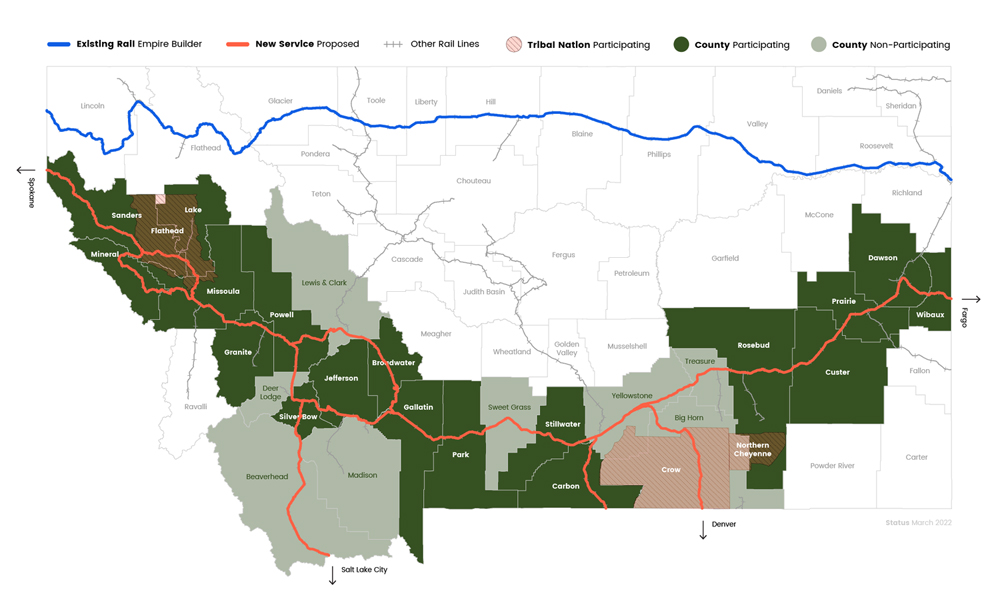
MISSOULA, Mont. — BNSF Railway has joined the group seeking to restore passenger rail service in southern Montana, a move welcomed because of the railroad’s role as primary host railroad for the proposed service.
The Missoula Current reports the railroad is now an ex officio member of the Big Sky Passenger Rail Authority, which seeks to bring back Amtrak service on the route, last operated in 1979, that would serve three of the state’s four largest cities.
Authority chairman Dave Strohmaier told the Current, “We frequently get asked, ‘Where do the host railroads stand with the efforts of the rail authority and passenger rail?’ Any uncertainly is now removed since the primary host railroad associated with the restoration of the North Coast Hiawatha is at the table with us.”
The railroad joins Amtrak and a representative of three Native American tribes as ex officio members. Jim Tylick, BNSF’s assistant vice president of passenger operations, will serve as the railroad’s representative. Seventeen counties now have representatives on the authority’s board. More information is available at the authority website.






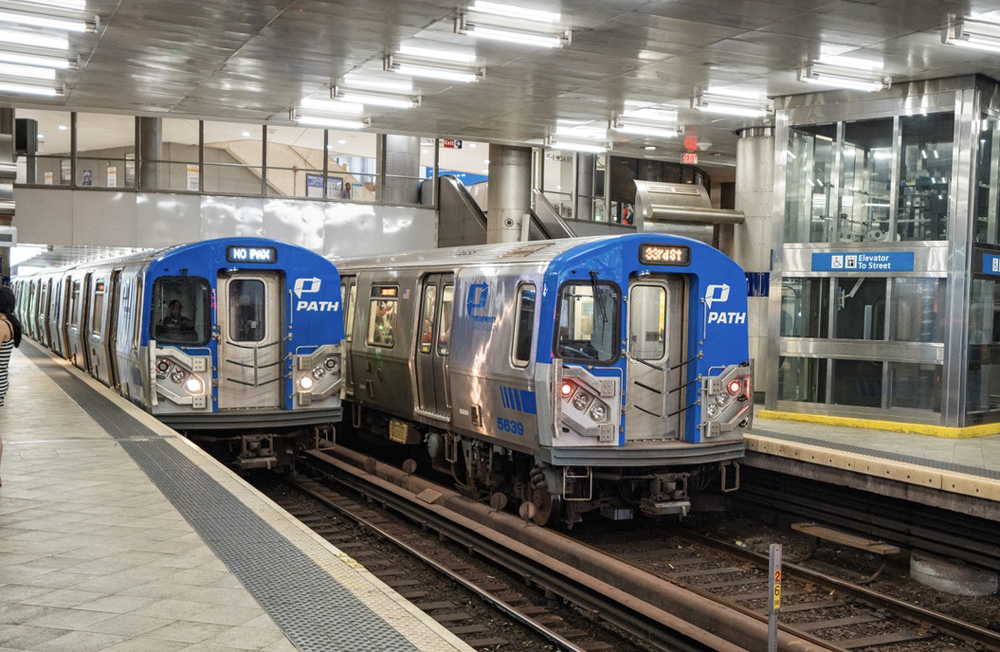
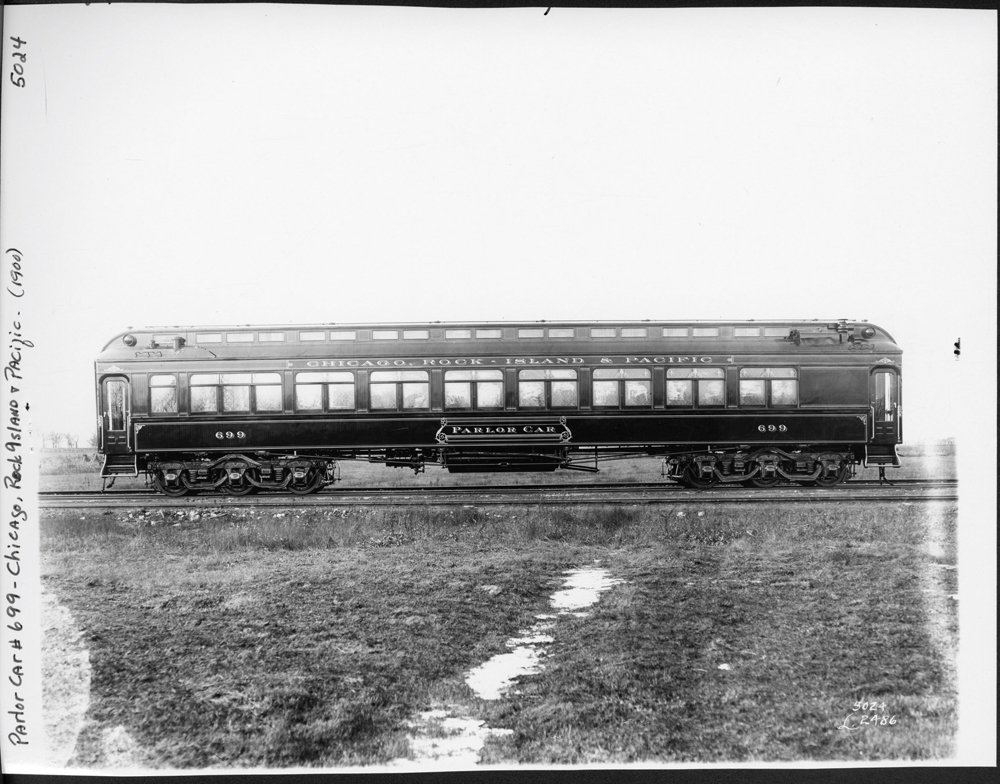
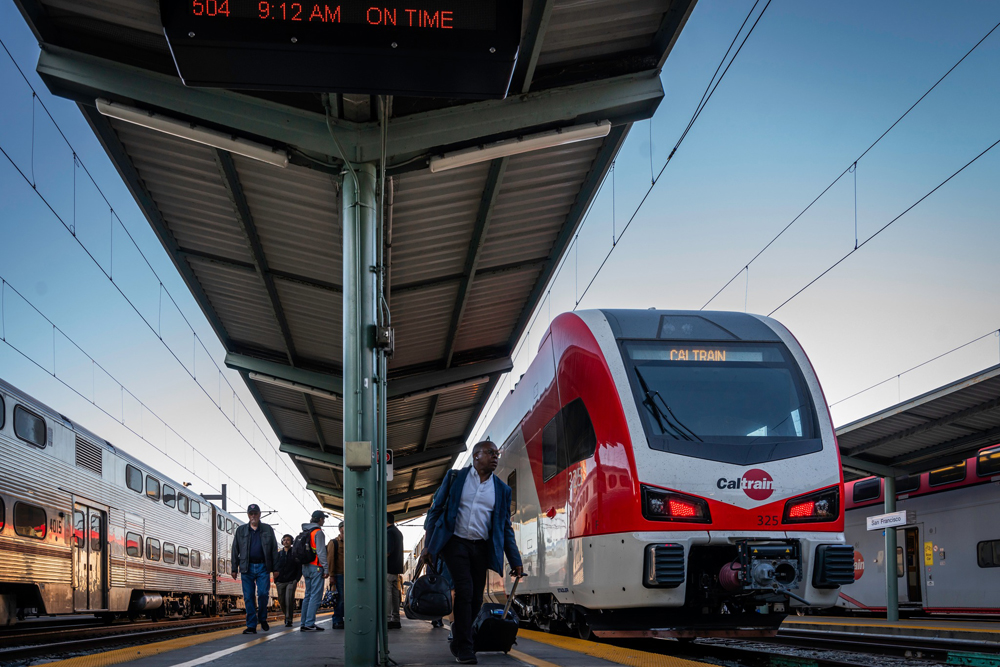
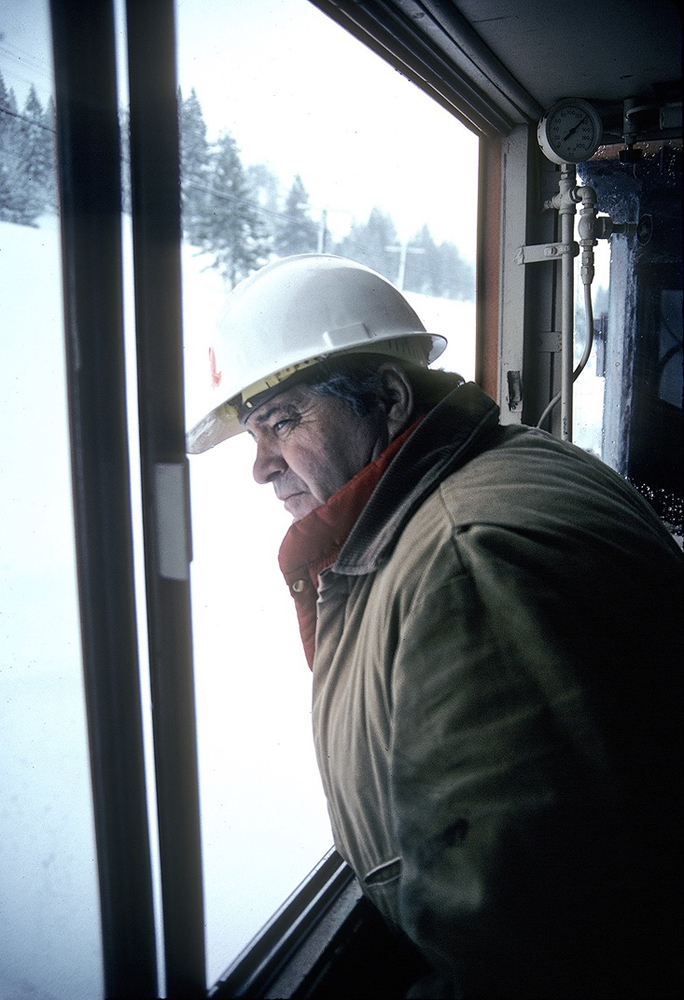




I would choose Helena (Mullan Pass) over Butte (Homestake Pass) because the railroad is in over Mullan Pass and Helena is the state capital. NP and BN ran two trains each way daily until Amtrak, the North Coast Limited via Butte and the Mainstreeter via Helena. Each train had a bus connecting over the opposite route.
I rode Amtrak’s North Coast Hiawatha Westward in the early 1970’s. One big memory is riding ex-CB&Q Budd 6S-4DB-6Rmt sleeper, descending from Homestake Pass into Butte. The sections were not in use, giving the car a capacity of 14 instead of 26. We watched down at a Boeing 727 landing at Butte. That’s right: we watched an airliner in flight from above out the window of a Pullman Section.
It would be a positive development for CN, CP, CSX, NS, and UP to encourage passenger authorities in area where there is an effort to restore passenger service. It could help manage expectations and establish sustainable operations.
Chris,
That’s because most of those countries are subsidizing ( usually heavily) those services. The USA is very large and spaced out compared to most of them. You are not going to find the support for subsidizing LD train and bus services in the USA as there is those smaller countries where there is little intracountry air service. Car or Air is “king” for longer distances in the USA. Any chance of significant LD service by train or bus went out the window when discount airlines established themselves. That produced airline fares for long journeys that were close enough to allow those who couldn’t afford to fly before to do so. It also didn’t help that the USA federally supports air travel to remote locations. Sometimes there are as few as 20-30 a day total for both inbound & outbound people at these subsidized smaller airports. I think that is ridiculous bur that’s politics.
I’m also influenced by many years of dealing with all levels of government agencies. I have no faith that Amtrak could ever manage our passenger rail effectively if the services you want were established.
The question for any state involving subsidized rail is (1) do you approach this issue by pleasing those who want to travel by train or (2) do you approach this issue by first trying to determine what is the best and most cost efficient for the state to transport people who don’t or can’t drive? The state will most likely be subsidizing the travel to some extent no matter how the travel occurs. So how can you get the travelers from one place to the next while controlling costs?
Chris, while I’ve been a rail fan all my life, I had the experience of working some with academic researchers involved with all types of transportation. That helped me realize that the ultimate goal in this type of a situation has to be what is best for most residents of the state. That includes the taxpayers who will always out-number, usually greatly, those actually using the service.
Steve I agree that getting the most bang for the taxpayers buck is a nice goal. But if that was taken to the extreme then we might be left with only one form of transportation that being the one with the lowest cost per passenger on a given route. And that may not be the one that the most people would likely use. Maybe the time has come in the U.S. when we can have more choices on how we get around, air, car, bus and yes trains. It’s working in other countries.
I wish I had a nickel for every time someone pointed out that passenger rail is working in other countries. First of all, clarify the term “working.” And that notwithstanding, it’s “working” because population centers are much closer together. Rail is “working” in the U.S. in those corridors that have high commuter volume, and or where cities are similarly close together. Long distance rail will never work because of the high ratio of operating expense to revenue, not to mention its inherent inflexibility. No rails, no train. The comment about serving Butte or Helena illustrates that problem perfectly. I love riding trains , but I also firmly believe subsidizing Amtrak so a small minority of travelers enjoy long distance rail travel is a non-starter.
I definitely would not ride a bus. If that option is presented to me I will drive. It is ridiculous that Montana’s largest cities do not have rail service for over 40 years now.
This is really good news. I rode the North Coast Hiawatha back in 1975 and really enjoyed it. I hope it can be restored soon, I’d like to ride it again. BNSF should be commended for participating in the group.
It would be great if they could get North Dakota initiate psgr rail on their portion of the route to connect with the Empire Bldr it would probably attract a good number of people who want to travel to Yellowstone & other destinations in that area. And I too would not ride a bus in MT especially in the winter which can come on suddenly in that region.
I’d join too since I would want to know what is happening and have some input in the matter.
Personally, I think states should try subsidizing privately owned bus service first and see how that works out. If there isn’t enough demand for it, then that’s a good sign the rail service won’t work either.
Bus service and rail service are not equal. Most folks would ride the train but not the bus if given a choice.
Mr. Foster I’m assuming you to have more than a passing interest in railroads and hopefully passenger trains. And as such you should know trains and buses are like apples and oranges. The average traveler is much more likely to and would much rather travel by train than bus. Trying to gauge if a train would work on a certain route by testing it with buses is ridiculous.
You’re right. BNSF’s “seat at the table” is just that: A way to know what is going on. Strohmaier’s comment “Any uncertainly is now removed since the primary host railroad associated with the restoration of the North Coast Hiawatha is at the table with us” is meaningless. BNSF isn’t promising anything. It’s best to show cooperation in the study when the (very likely) result that there is no train comes to pass so that the host railroad cannot be scapegoated as the villain. BNSF will certain demand substantial infrastructure upgrades, and these are most notable on routes with many steep grades and curvature where passenger trains can quickly overtake heavy, long trains – and the North Coast Hiawatha route has many miles of these. It’s also important to remember that the Big Sky Passenger Rail Authority IS a government entity, and therefore that’s another reason for BNSF’s participation. But being a Montana State government entity doesn’t mean that the State of Montana supports it – actually, the opposite is true. The BSPRA was formed specifically because the legislature showed little interest, and definitely was not interested in actually forking over any money. The BSPRA has taxing authority, but if they ever tried it, the support they have would diminish. They are expecting all the funding to be provided by the federal government.
Wouldn’t this proposal include reopening Homestake Pass? That’s how the route worked in the 70’s.
The article says the intent is to serve the largest cities in Montana. Homestake Pass or no Homestake pass, a train has to choose Butte or Helena, can’t have both.